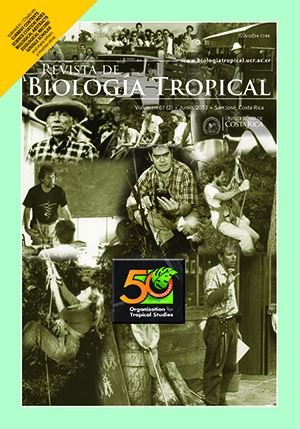Abstract
Freshwater macroinvertebrates from Cocos Island, Costa Rica: species and comparison with other islands of the Eastern Tropical Pacific. Cocos Island is an oceanic island in the Eastern Pacific, at 496km from Cabo Blanco, Costa Rica. This 24km2 island is surrounded by a protected marine area of 9 640km2. It was declared National Park in 1978 and a World Heritage by UNESCO in 1997. Freshwater macroinvertebrate fauna was collected in 20 sites covering three rivers (Genio, Chatam and Sucio) and two creeks (Minuto and an unnamed creek behind the park rangers’ house). Tank bromeliads or phytotelmata were also examined for aquatic macroinvertebrates. Physicochemical parameters were determined in 13 study sites. Additionally, a comparison with other islands in the Eastern Tropical Pacific was conducted to determine the most important factors controlling the diversity in Tropical Pacific islands. A total of 455 individuals were collected belonging to 20 taxa (mostly identified to genus level) from 15 families of aquatic insects. Other macroinvertebrates such as Palaemonid shrimps, Hidrachnida and Oligochaeta were also collected. The family Staphylinidae (Coleoptera) was the most abundant, followed by Chironomidae (Diptera). Diptera was the order of insects with the highest taxonomic richness. A relationship between distance and the number of families was observed supporting the premises of the Theory of island Biogeography. This relationship was improved by correcting area by island elevation, indicating that mountainous islands had the richest faunas, potentially due to high cloud interception that feeds freshwater environments favoring the establishment of aquatic fauna. Physicochemical variables were similar in all sites, possibly due to the geology and the absence of significant sources of pollution on the island.Comments
Downloads
Download data is not yet available.






